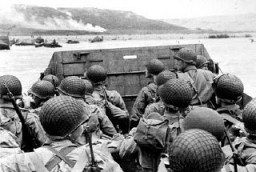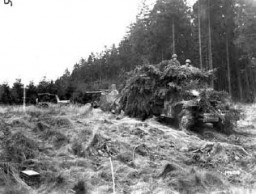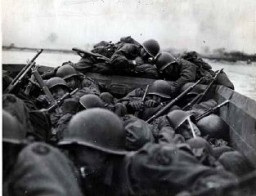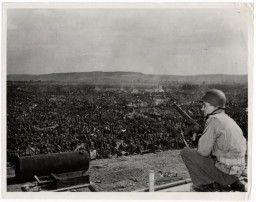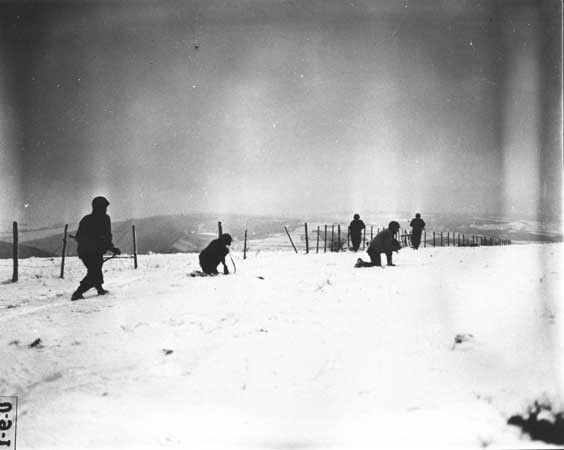
Battle of the Bulge
On December 16, 1944, the German military launched the “Battle of the Bulge.” It was a last-ditch German military counter-offensive against the Allied armies in the West. Hitler hoped that the German counter-attack would surround the British and American armies and stall the Allied offensive against Germany. By early January 1945, the German military effort had failed. The Battle of the Bulge cost the Reich some 100,000 casualties and tremendous losses in military equipment.
-
1
The Battle of the Bulge was the last major German military offensive in western Europe.
-
2
The German offensive in the Ardennes region of Belgium was only temporarily successful in halting the Allied advance.
-
3
During the fighting, captured American soldiers and Belgian prisoners were murdered by Waffen SS units. The atrocity is known as the “Malmedy Massacre.”
What Started the Battle of the Bulge?
As the Allies attempted to penetrate across the western border of Germany in late 1944, the Germans tried one last gambit to reverse their fortunes. Operation “Watch on the Rhine” was intended to split British and US forces in northern France.
Battle of the Bulge: Photographs
What Happened During the Battle of the Bulge?
Attacking through the Ardennes Forest in eastern Belgium on December 16, hundreds of German tanks and several hundred thousand German troops broke through the thinly held American lines. Although the Germans advanced as much as 50 miles in some areas, the Ardennes offensive was short-lived. Despite taking dreadful losses, US forces managed to delay the enemy sufficiently to permit reinforcements to be moved into position to halt the German drive.
During the fighting, captured American soldiers and Belgian prisoners were murdered by Waffen SS units. The atrocity is known as the “Malmedy Massacre.”
By December 26, it was clear that the German advance had been halted short of its objective, the Meuse River. In some sectors, such as the vital Elsenborn Ridge, German troops failed to make significant progress at all. On that same day, December 26, 1944, US armored troops reached the beleaguered defenders of a vital road junction in the town of Bastogne.
How Did the Battle of the Bulge End?
In large part, it was the tenacious defense put up by American soldiers, fighting in small groups in sub-zero cold and snow that stopped the German advance. This was all the more remarkable since many of the US units fighting in the Battle of the Bulge had taken heavy casualties in the Hürtgen Forest fighting in the autumn of 1944.
After enlarging the corridor to Bastogne at the end of December, US troops and some British troops counterattacked to eliminate the Bulge, with the US First Army attacking from the north and General George Patton's Third Army from the south. In the face of increasing Allied pressure, the Germans began to withdraw from the Battle of the Bulge on January 8, 1945. The 11th Armored Division, which was a part of the Third US Army, joined forces with the 2nd Armored Division and the 84th Infantry Division of the First Army at Houffalize, Belgium, about 20 miles east northeast of St. Hubert, on January 16, 1945. The American advance continued, eliminating all German gains by the end of January 1945. Without halting, US forces challenged the German defenses of the Siegfried Line, now undermanned after the heavy German losses during the Ardennes offensive. The Battle of Germany lay ahead.
Who Won the Battle of the Bulge?
The Allies won the Battle of the Bulge. The Germans suffered more than 100,000 casualties; the Americans approximately 81,000.
Series: Allied Military Advances in the West
Critical Thinking Questions
- After the war, did the American army pursue justice in the wake of the Malmedy Massacre?
- How did this battle affect the course of the war?
